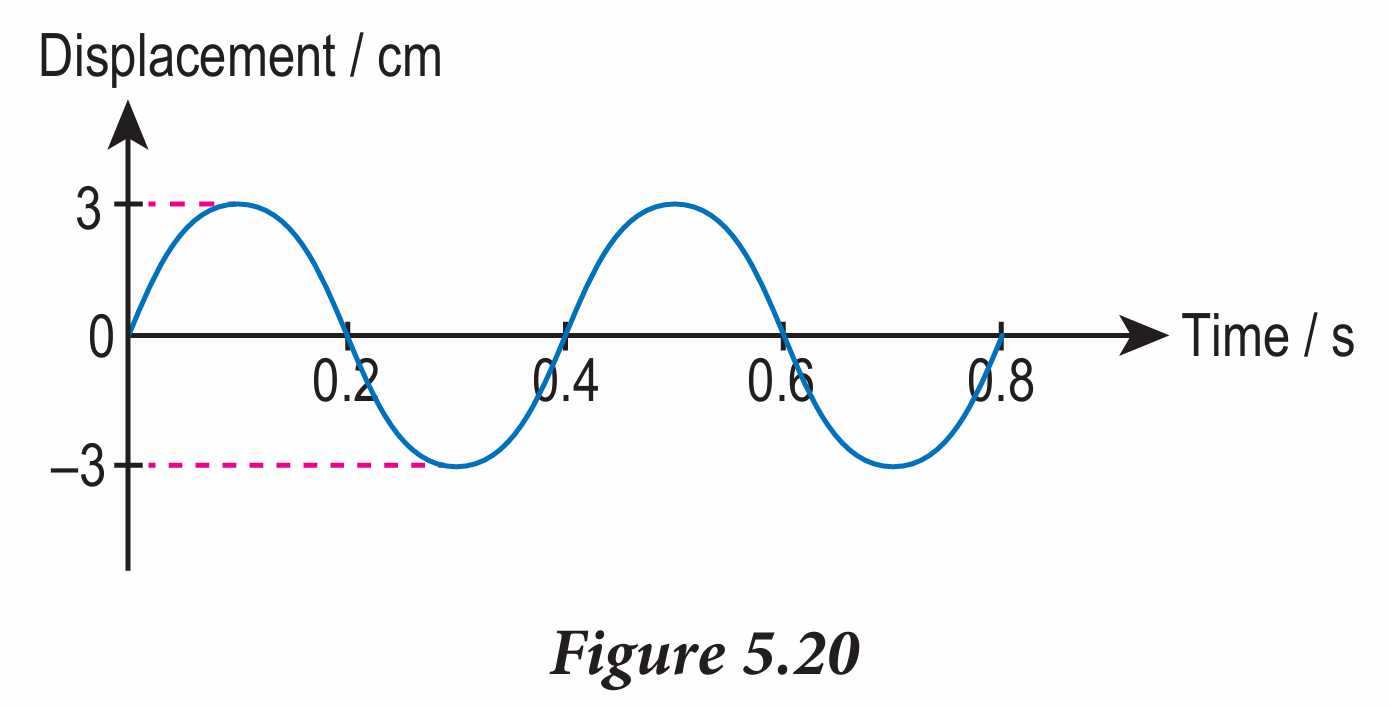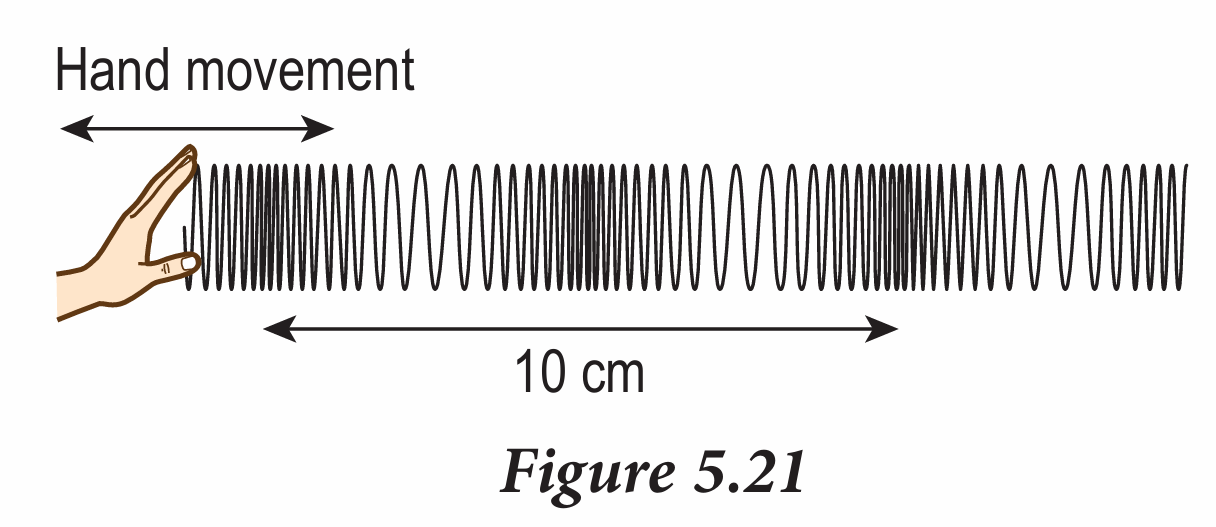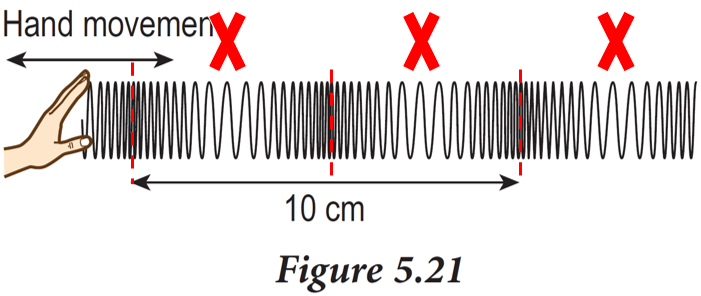Question 1:
Figure 5.20 shows a graph of displacement against time for a wave.

(a) What is meant by amplitude?
(b) Determine the period of oscillation, T. Th en, calculate the frequency of oscillation.
Answer:
(a) Amplitude is the maximum displacement from its equilibrium position.
(b)
From the graph, period, T = 0.4 s
$$ \text { Frequency, } \begin{aligned} f & =\frac{1}{T} \\ f & =\frac{1}{0.4} \\ & =2.5 \mathrm{~Hz} \end{aligned} $$
Figure 5.20 shows a graph of displacement against time for a wave.

(a) What is meant by amplitude?
(b) Determine the period of oscillation, T. Th en, calculate the frequency of oscillation.
Answer:
(a) Amplitude is the maximum displacement from its equilibrium position.
(b)
From the graph, period, T = 0.4 s
$$ \text { Frequency, } \begin{aligned} f & =\frac{1}{T} \\ f & =\frac{1}{0.4} \\ & =2.5 \mathrm{~Hz} \end{aligned} $$
Question 2:
Compare and contrast progressive wave and stationary wave.
Answer:
– A progressive wave is a wave where the wave profile moves with time along the direction of wave propagation.
– A stationary wave is a wave where the wave profile does not move with time.
Compare and contrast progressive wave and stationary wave.
Answer:
– A progressive wave is a wave where the wave profile moves with time along the direction of wave propagation.
– A stationary wave is a wave where the wave profile does not move with time.
Question 3:
Figure 5.21 shows a slinky spring being moved forward and backward at one of its ends.

(a) What type of wave is produced by a slinky spring?
(b) Mark “X” at the rarefaction part of the wave in Figure 5.21.
(c) What is the wavelength, λ of the wave?
Answer:
(a) Longitudinal waves
(b)

(c)
Wavelength is the distance between two consecutive points in phase.
$$ \text { Wavelength, } \begin{aligned} \lambda & =\frac{10}{2} \\ \lambda & =5 \mathrm{~cm} \end{aligned} $$
Figure 5.21 shows a slinky spring being moved forward and backward at one of its ends.

(a) What type of wave is produced by a slinky spring?
(b) Mark “X” at the rarefaction part of the wave in Figure 5.21.
(c) What is the wavelength, λ of the wave?
Answer:
(a) Longitudinal waves
(b)

(c)
Wavelength is the distance between two consecutive points in phase.
$$ \text { Wavelength, } \begin{aligned} \lambda & =\frac{10}{2} \\ \lambda & =5 \mathrm{~cm} \end{aligned} $$
